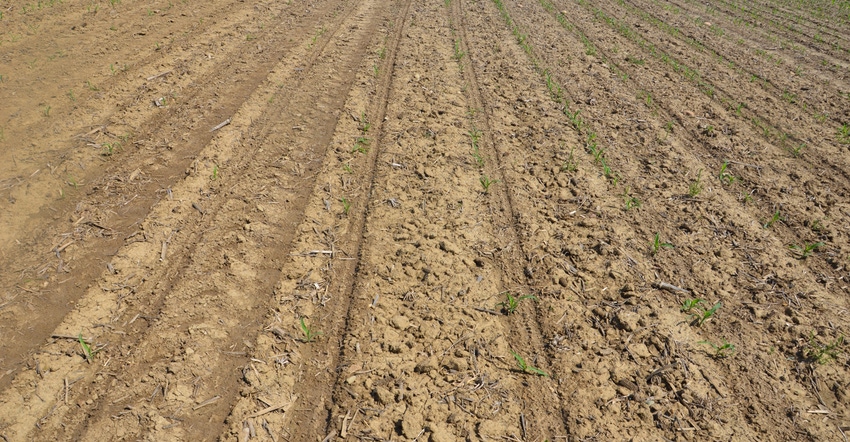
You finally plant corn. Then not everything goes your way. Maybe there’s a cool snap, or maybe your field gets caught by black cutworm. Do you replant?
Many things factor into the decision, including stage of growth, replant costs and date you could replant, explains Bob Nielsen, Purdue University Extension corn specialist. Your first job should be scouting the field, making stand counts and obtaining an accurate picture of all parts of the field.
Once you have stand counts, consult the Purdue University Corn and Soybean Field Guide. It contains tables to help you quantify your decision so you’re not making it solely on emotion.
Replant decisions
Here are three examples using the Purdue guide:
1. You planted 32,000 seeds per acre on May 9. Average stand count on May 25 is 24,500. Find the table named Expected Grain Yield Due to Various Planting Dates and Final Plant Populations on Page 56 in the 2019 pocket guide. Look at the left-hand side of the table. Your planting date is closest to May 10. Read across and find 32,000. That represents plants per acre, which would be unlikely to achieve at a 32,000 seeding rate even in perfect conditions. But if you did, you would expect 97% of your original potential; there is already some loss factored in for planting after May 1. If your full potential is 200 bushels per acre, your new potential is 200 times 0.97, or 194 bushels per acre.
Now find 24,000 — your actual count for the May 10 planting. You can still make 94% of the original potential, or 200 times 0.94, which is 188 bushels per acre.
Now suppose you replant May 25 and obtain a perfect stand. Based on averages, the best you can expect is 87% of your original goal, due to delayed planting. The new math is 200 times 0.87, or 174 bushels per acre. That’s a 14-bushel-per-acre hit on average, or $49 per acre at $3.50-per-bushel corn, not counting replanting costs. Leave the stand!
2. You planted 32,000 on May 9. Average stand count on May 25 is 16,000. The procedure is the same. You already know that you were looking at 194 bushels per acre planted May 9 with a perfect stand. At 16,000 plants per acre, you’re looking at 200 times 0.82, or 164 bushels per acre.
If you can replant May 25 and obtain even 30,000 plants per acre, you’re looking at 87% of original yield, or 174 bushels per acre. You stand to gain 10 bushels per acre, or $35 per acre, for replanting, less replant costs. If you have free replant seed, it may tip the scales toward replanting. If you must buy the seed, you may be back to breakeven, not counting other replant costs. There is also no guarantee of a perfect stand the second time around.
3. Assume the same scenario as in Example 2, except it’s wet and you can’t replant until June 4. The bottom begins to fall out of yield potential, even though there are individual years where planting June 4 still produces good yields. If you’re playing averages, the new expected yield for 30,000 or 32,000 plants per acre planted June 4 is 75% of potential, or 150 bushels per acre. It’s a no-brainer — live with the stand.
About the Author(s)
You May Also Like




